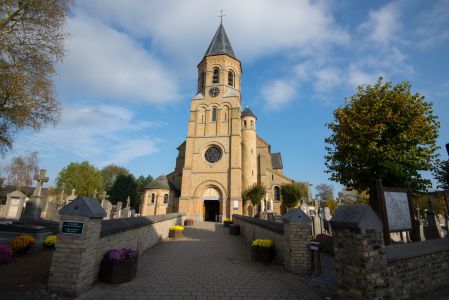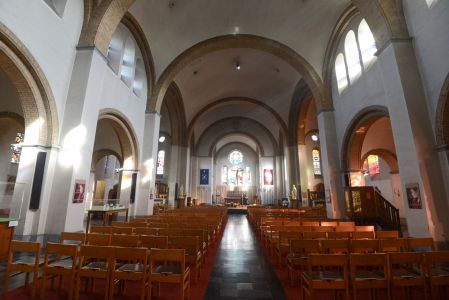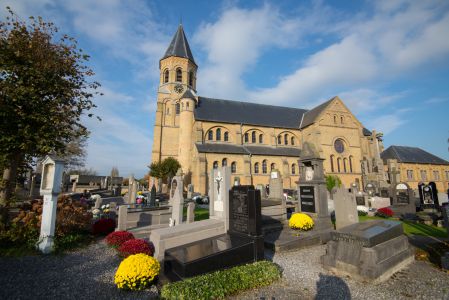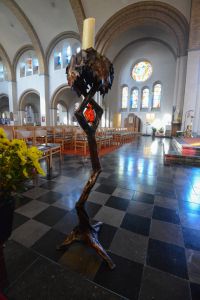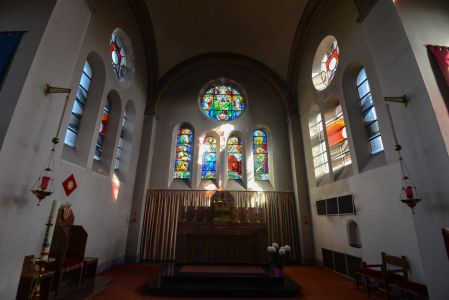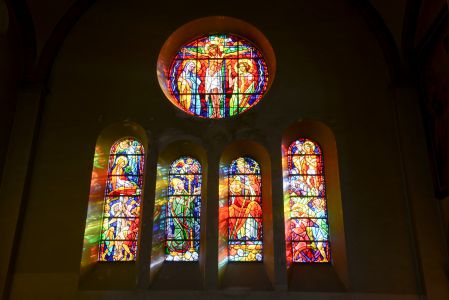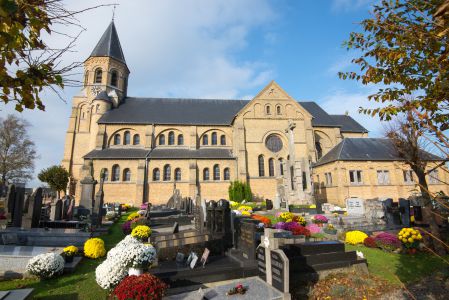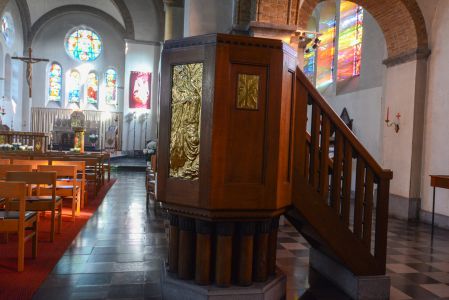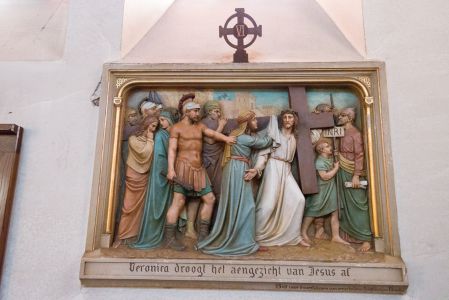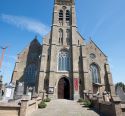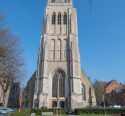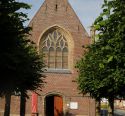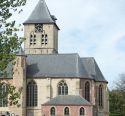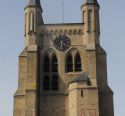Church | 1923 | Neoromanesque | Catholic Church
Map
Opening hours
01 April - 31 October
Mon 14.00 - 18.00
Tue 14.00 - 18.00
Wed 14.00 - 18.00
Thu 14.00 - 18.00
Fri 14.00 - 18.00
Sat 14.00 - 18.00
Sun 14.00 - 18.00
01 November - 31 March
Mon 14.00 - 16.00
Tue 14.00 - 16.00
Wed 14.00 - 16.00
Thu 14.00 - 16.00
Fri 14.00 - 16.00
Sat 14.00 - 16.00
Sun 14.00 - 16.00
Religious offices
Description
This church has an interesting history. It was originally an abbey church, founded in 1068. Like many houses of worship, the church and the abbey were destroyed after the French Revolution and the French domination in our regions. Later the church was damaged again several times and then rebuilt. In the early 19th century (1807-1811) it was rebuilt in neoclassical style, with three naves and a built-in west tower. The First World War brought new destruction. In 1923 the current structure was established according to the plans of architect Jules Coomans.
The church is still surrounded by the cemetery including the impressive sepulchral monument of the family de Geus. Also look at the other tombstones in the wall of the northern and southern side aisle of the church.
Stylistically it is an eclectic house of prayer. Its building style is leaning towards the Romanesque Revival with regional and Neo-Byzantine influences. The church is built in typical yellow polder stone. Bluestone was used for ornamental elements.
The interior is Neo-Romanesque. In one of the paintings you see the Augustinian abbey Our Lady Voormezele in 1619, painted by L. Leeg in 1971. A copper plate indicates the names of the “provosts and the abbots of the former abbey of Our Lady of Voormezele"(1972). Some objects in natural stone come from the former abbey, including a holy-water font and a cartouche with shield in the portal.
Every year on the first Sunday after Pentecost, the Holy Blood Procession is organised. This event refers to the relic of the Holy Blood which is kept in the church. The precious relic was taken by knight Isaac in 1152 during one of his trips to Rome. 1952 was the jubilee for 800 years Holy Blood in Voormezele. On that occasion the jubilee procession received its present form. There are actually performing 650 participants in the procession and there is an evocation of the historical event with singing, acting and movement.
KIKIRPA : Photo-library online
Photos
Remarkable elements
Relic of Holy Blood
The precious relic would have been taken by knight Isaac in 1152 during one of his trips to Rome. 1952 was the jubilee year for 800 years of Holy Blood in Voormezele. On that occasion the jubilee procession that goes out on the Sunday after Pentecost took its present form. In the procession there are about 650 participants and there is an evocation of the historical event with song, play and movement.
Translated with www.DeepL.com/Translator
Christ on the cold stone
Statue donated by village priest Rev. Jozef Verstraete.
Scale models of the evolution of the old abbey
A number of models show the infrastructural evolution of the old abbey from its origins to its destruction during the French Revolution.
Marble holy-water font
The holy water font in the portal of the church is a remnant of the old abbey under French regime in 1794.
Overview priest services
Copper plate with an overview of all priests who served at the parish from 1469 until today.
List of the deans and abbots of the abbey
Copper plate with an overview of all the deans and abbots of the abbey from 1100 to 1782-1796.


